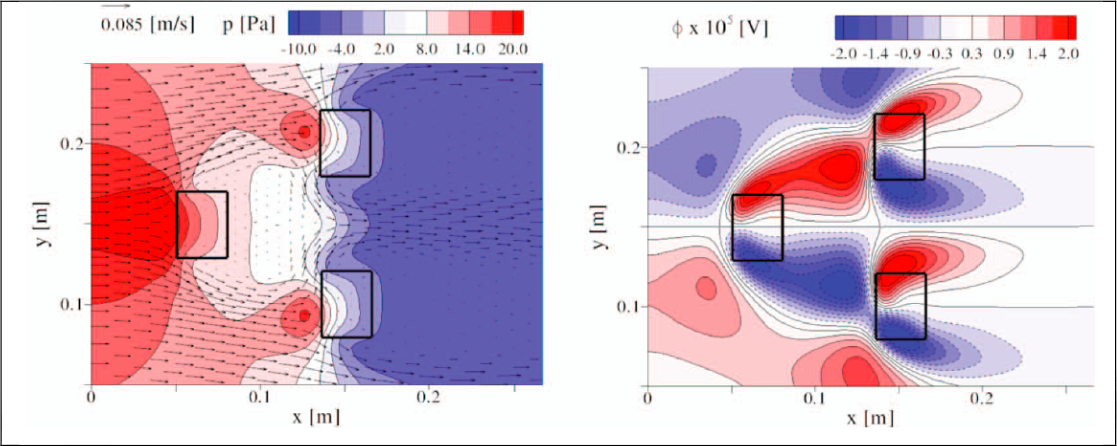Controlling electrically conducting fluids by imposed electromagnetic fields
Research goal
Numerical cal simulations and modeling of thermal and magnetic convection at very high Rayleigh and Hartmann numbers has long been a serious challenge because of the profound effects that buoyancy and Lorentz forces have on the reorganization of the vortical structures, and because of the extreme thinning of the wall boundary layers which requires high numerical resolution. The aim of this study is to develop physically well-based and numerically efficient approaches to tackle problems of highly turbulent thermal and magnetic convection in complex geometries.

A zoom-in of the pressure contours and velocity vectors (-left) and of electric potential (-right) of an instantaneous flow realization in the central horizontal plane in a channel flow of a fluid conductor subjected to the localized magnetic fields, Re = 1000, N = 10. The locations of the magnetic dipoles projections in the central horizontal plane are depicted by black rectangles, Kenjeres (2016).
Project leader
Funded by
TU Delft